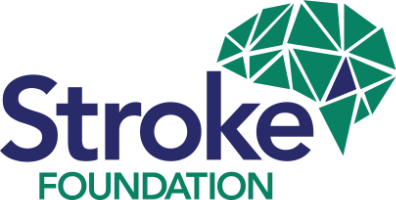I was only 21
By Tina
On a seemingly normal day, I had just returned home from brunch with a good friend. I offered her a glass of water before her long drive home, and then everything changed in a moment. I had a brief headache, lasting only a minute, and sat down. That’s when I noticed I couldn’t swipe my phone screen to unlock it. My friend, also a paramedic, noticed something was wrong. She asked me to smile. I couldn’t. What seemed unthinkable for two paramedics was actually happening - I was having a stroke. I was only 21.
I tried to stand, but after taking just two steps, I collapsed. Unable to speak or move, I vomited and remained conscious, but my body no longer responded. My friend called my parents and dialed triple zero (000) for an ambulance. When paramedics arrived, despite my friend explaining I hadn’t taken any drugs, they a gave a provisional diagnosis of a drug overdose. On the way to the hospital, I lost consciousness as my condition worsened. A CT scan revealed a brain bleed, and I was urgently helicoptered to the ICU in Brisbane. My family was told I might not survive and if I did, there would likely be significant impacts.

I spent five days unconscious, 10 days in ICU, and ultimately, seven months in the hospital. During that time, I underwent a series of life-saving interventions. A cerebrospinal fluid drain was installed to relieve pressure, but the bleed in my brainstem was too extensive for surgery. For more than three months, I relied on a feeding tube, over the years, I’ve had several surgeries, including a thalamotomy, facial nerve and muscle transfers, and multiple procedures on my left eye. Every step has been part of a long and ongoing recovery.

Physically, the stroke left me severely impacted. I was paralysed on one side, unable to speak, eat, or even move without assistance. Fatigue overwhelmed me, and I developed a rare tremor on my right side. Tasks like drinking water became incredibly challenging, and I had to relearn how to move, build strength, and regain balance.
Emotionally, it was a different kind of battle. As someone who was once fit and energetic, my physical limitations were a stark contrast to the person I used to be. I had dreams of becoming a doctor after my time as a paramedic, but my stroke changed the course of my future. Accepting that my rehabilitation would likely be a lifelong process has been the hardest part. I initially believed that within two years, I’d be fully recovered. Nine years later, I am still working hard to overcome the impacts.
One of the biggest challenges I face is helping people understand that strokes can happen to young, fit individuals. People often avoid speaking directly to me or assume I can’t understand because of my physical appearance. But survivors of stroke, like me, want to be treated like everyone else. Yes, I might be in a wheelchair, and have difficulty speaking, but I am more than capable of meaningful communication and relationships.
Through all of this, I am proud of how far I’ve come. I’ve pushed myself through intense rehabilitation, training at the gym, swimming, cycling, and more. Despite the doubts of medical professionals and the public, I’ve continued to fight. I’ve found the strength to retell my story, and in doing so, I’ve discovered that my journey has inspired others facing their own battles.

What do I want people to know about stroke? First, that it can strike anyone—no matter how fit or healthy you are. There are two types of strokes, and the impact depends on which part of the brain is affected. But most importantly, I want people to understand that a survivor’s life isn’t defined by their limitations. We are resilient, we adapt, and we continue to fight for our independence and dignity, one step at a time.
If you would like to know more about my stroke recover journey you can follow me on Instagram & TikTok @paramedictopatient and paramedic_to_patient
